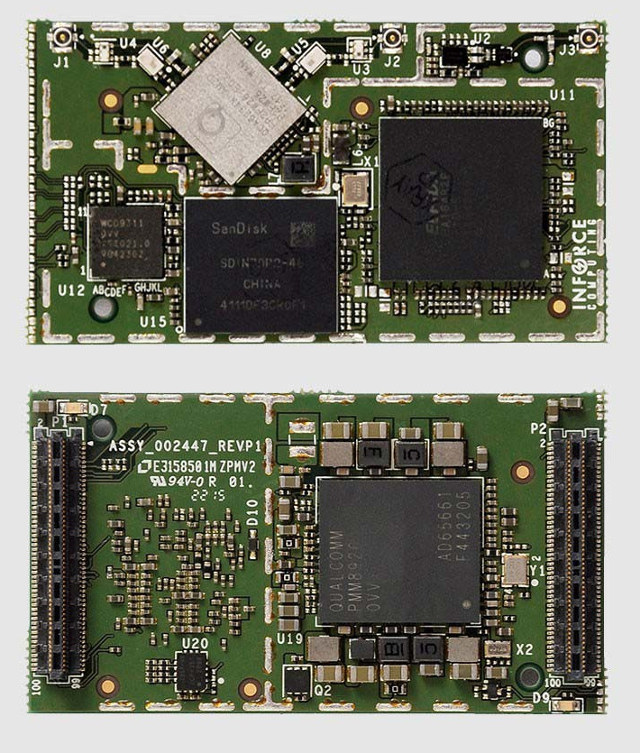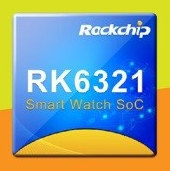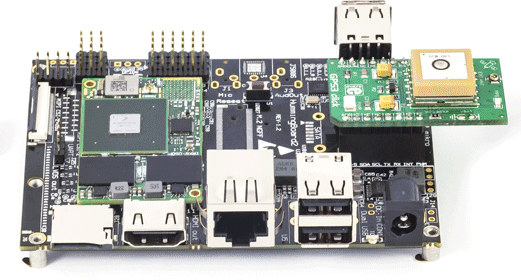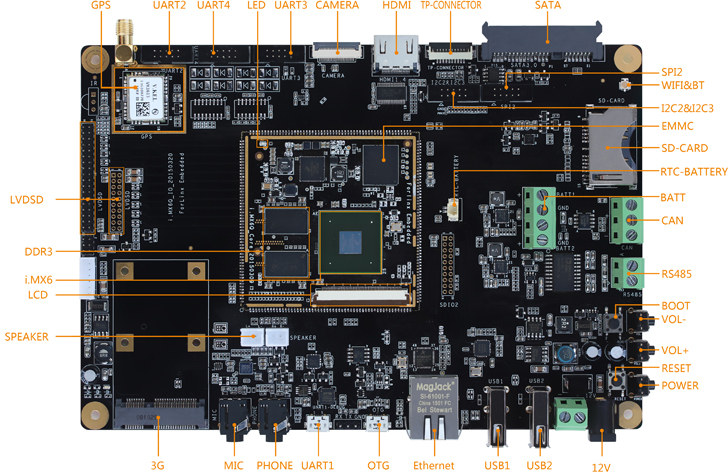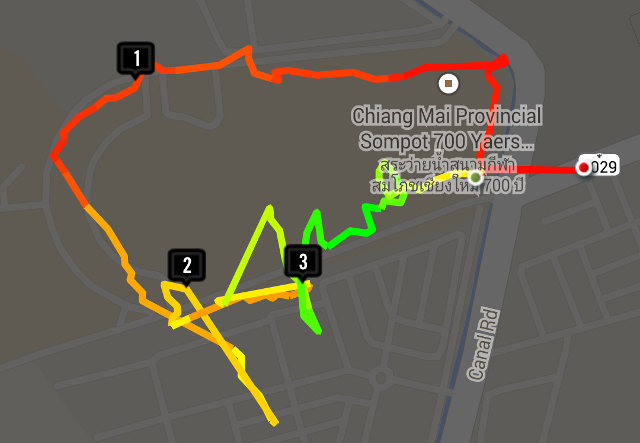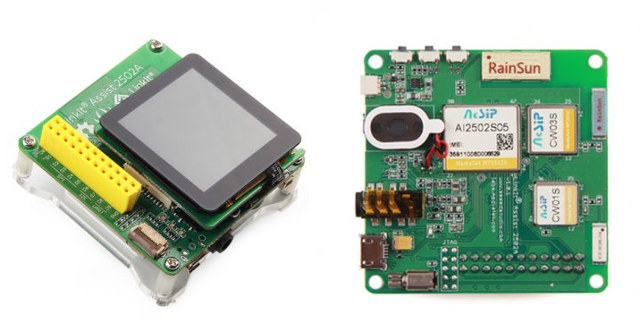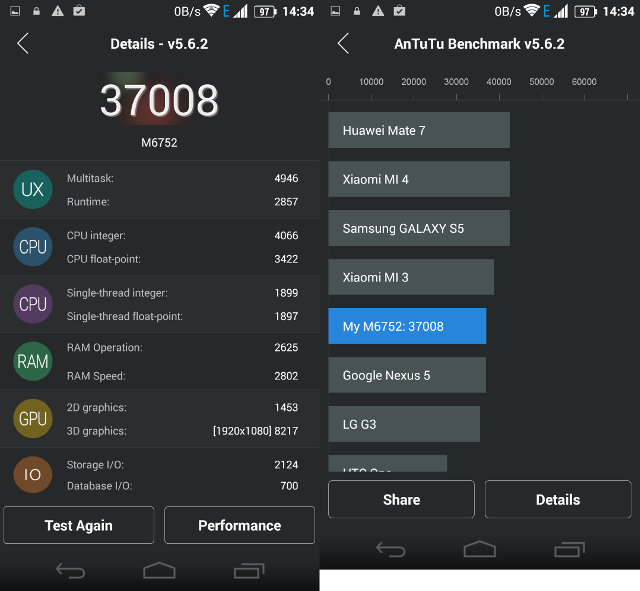Inforce Computing announced their 6501 Micro SOM system-on-module based on Qualcomm Snapdragon 805 processor in Q2 2015, and the company informed me that they had just unveiled a lower power version based on Snapdragon 600 processor called 6401 Micro SOM, and still featuring WiFi, Bluetooth 4.0, and GPS connectivity on module. Inforce 6401 Micro SOM: SoC – Qualcomm Snapdragon 600 (APQ8064) quad core Krait processor up to 1.7 GHz with Adreno 320 GPU, and Hexagon DSP v4 up to 500MHz System Memory – 2GB PoP LPDDR2 @533Mhz (Optional 3GB) Storage – 4GB eMMC v4.4.1/v4.5, with options up to 64GB Connectivity – BT 4.0 , dual band 802.11n/ac Wi-Fi (QCA6234), and GPS (WGR7640) with WiFi and GPS antennas on carrier board Peripherals and I/O via two 100-pin SoM connectors: Video / Display – 1x HDMI, 2x MIPI-DSI (4-lane) & touch screen Audio 4x Line out, 3x Mic-in, 1x headphone out 8-channel […]
Rockchip RK6321 Dual Core Cortex A5 SoC Targets Wearables with WiFi, Bluetooth, 3G and GPS
Rockchip and Intel started to work on a platform called XMM6321 last year. It featured a dual Core Cortex A5 processor, 3G connectivity, WiFi, and GPS, which was aimed at entry level 3G smartphones and tablets. Fast forward to 2015, Rockchip showcased their RK6321 processor at the Hong Kong Electronics Fair, with very similar specifications compared to XMM6321, but instead it targets wearables such as smartwatches, or children and elderly tracker. So I’ m not quite sure whether Intel XMM6321 and Rockchip RK6321 are the same processor with a different name, or Rochchip tweaked RK6321 specifically for wearables. Key features of Rockchip RK6321 processor: CPU – Two Cortex A5 cores up to 1GHz with 32KB L1 D-cache, 32KB L1 I-cache, and 512KB L2 cache GPU – Supports OpenGL ES 2.0 Memory and Storage I/F – 16-bit LP-DDR2 SDRAM, 8-bit eMMC, 16-bit NAND Display I/F – MIPI DSI up to FWVGA […]
HummingBoard Gate Boards Add a mikroBUS Socket to Support MikroElektronika Click Boards
SolidRun already released HummingBoard-Base, HummingBoard-Pro, and HummingBoard Edge previously, but the company has now launched another version of their Freescale i.MX6 based boards with HummingBoard Gate that adds a mikroBUS socket to support over 150 add-on boards – called Click Boards – made by MikroElektronika. HummingBoard Gate specifications: SoC – Freescale i.MX6 Solo, Dual Lite, Dual, or Quad with Cortex-A9 cores @ 1 to 1.2 GHz System Memory – Up to 4GB DDR3 Storage – Micro SD slot Connectivity – Gigabit Ethernet (limited to 470Mbps), optional WiFi/Bt module Video Output – HDMI output, MIPI-DSI connector Camera – MIPI CSI-4, parallel camera USB – 4x USB 2.0 ports Expansion mPCIe slot with SIM card holder 36-pin GPIO header mikroBUS click interface Misc – Reset button, RTC with battery Power – 7-36V, 5.5mm jack Dimensions – 102 x 69 mm As usual, the board is comprised of a baseboard and a microSOM, […]
Forlinx Embedded Introduces a Features-packed Freescale i.MX6 Industrial Board
Forlinx Embedded Technology has made several ARM9, ARM11, and Cortex A8 boards in the past, and they’ve now launched their first ARM Cortex-A9 board powered by Freescale i.MX6 Quad processor with 1GB RAM, 8GB eMMC Flash, HDMI, LCD, and LVDS interfaces, mPCIe connector for 3G module, SATA, GPS, CAN bus, RS485 port, and more. The board is composed of a baseboard and a 220-pin CPU module (soldered) with the following combined specifications: SoC – Freescale i.MX6 Quad with 4x ARM Cortex A9 cores @ up to 1.2 GHz and Vivante GC2000 3D GPU System Memory – 1GB DDR3 Storage – 8GB eMMC, SATA connector, and SD card slot up to 32GB Video Output / Display I/F – HDMI 1.4, LCD interface (7″ capacitive touch available), and 2x 8-bit LVDS interface. 4-wire resistive touch. Audio – 1x stereo audio jack, 1x mono microphone jack, 2x speaker headers Camera I/F – 1x […]
Improve Mediatek MT6752 GPS Accuracy by Turning WiFi Off?
Mediatek smartphones used to have a terribly slow GPS fix, and it would often take over 10 minutes to get a fix if any, and one workaround was to enable Mediatek EPO. However, in my Iocean M6752 review, I found out GPS fix was not super fast even without Internet connection, but accuracy is quite a disaster as Nike+ Running screenshot below clearly shows. I’m running around a stadium so the shape should be elliptic…, but data point are all over the place. Since the review, I’ve kept using the smartphone with Nike+ Running, and each time it’s a disaster, and once the app even reported a 81 km for an actual 10 km run… I’ve also used Google Maps once or twice, and found accuracy to be poor as well. However, I usually leave Wi-Fi on, and for some reasons today, I decided to turn Wi-Fi off before driving […]
Mediatek LinkIt Assist 2502 Open Source Hardware Board Targets Wearables and IoT Applications
After LinkIt ONE, Mediatek Labs has introduced a new IoT development kit based on their Aster M2502 ARM7 processor with LinkIt Assist 2502 comprised of AcSiP MT2502A IoT SiP Core module, a 802.11b/g/n module, a GNSS module, and an exchangeable 240×240 16-bit color capacitive touch LCM Board. The AcSiP module can also be purchased separately, so you could use LinkIt Assist 2502 board for early development, because moving to your custom hardware based on AcSiP MT2502A module. LinkIt Assist 2502A specifications: MCU – AcSiP AI2502S05 module with MT2502A (Aster) ARM7 EJ-STM processor @ 260MHz, 4MB RAM, 16MB flash Display – 240×240 LCD module; 16-bit color depth; transflective; based on ST7789S driver IC. Connectivity Wi-Fi 802.11 b/g/n via AcSiP CW01S module based on MT5931 SoC Bluetooth 2.1 SPP and 4.0 GATT dual mode (part of MT2502A) GPS via AcSiP CW03S module based on MT3332 chip supporting GPS, GLONASS, and BeiDou. GSM […]
Iocean M6752 Smartphone Review
Last week I provides specs, took some pictures, and run Antutu benchmark on Iocean M6752, a 64-bit ARM smartphone powered by Mediatek MT6752 octa-core Cortex A53 processor with 3GB RAM, 16 GB eMMC, and a 5.5″ FullHD display. I’ve been using the device as my main smartphone for over a week, and I’m now ready to write a full review for the phone. General Impressions At first the material and color used on the back cover feels a little strange, but I quickly got used it, and the build quality seems pretty good, and the phone is very light. I must have made one or two calls during the week, and I mainly use my smartphone to check emails, run social network apps, browse the web, play some casual games like Candy Crush Saga, watch YouTube videos, and make Skype calls, and for these tasks I could not really fault […]
FOSDEM 2015 Schedule – January 31 – February 1 2015
FOSDEM (Free and Open Source Software Developers’ European Meeting) takes place every year during the first week-end of February. This year the developer-oriented event expects to bring over 5000 geeks to share ideas and collaborate on open source projects. Contrary to most other events, it’s free to attend, and you don’t even need to register, just show up. FOSDEM 2015 will take place on January 31- February 1 in Brussels. There will be 551 sessions divided into 5 keynotes, 40 lightning talks, 6 certification exams, and with the bulk being developer rooms and main tracks, divided into 7 main tracks this year: Languages, Performance, Time, Typesetting, Hardware, Security and Miscellaneous. I’m not going to attend, but it’s still interested to see what will be talked about, and I’ve concocted my own little virtual program out of the main tracks and developers’ rooms. There’s a few minutes overlap between some talks […]


